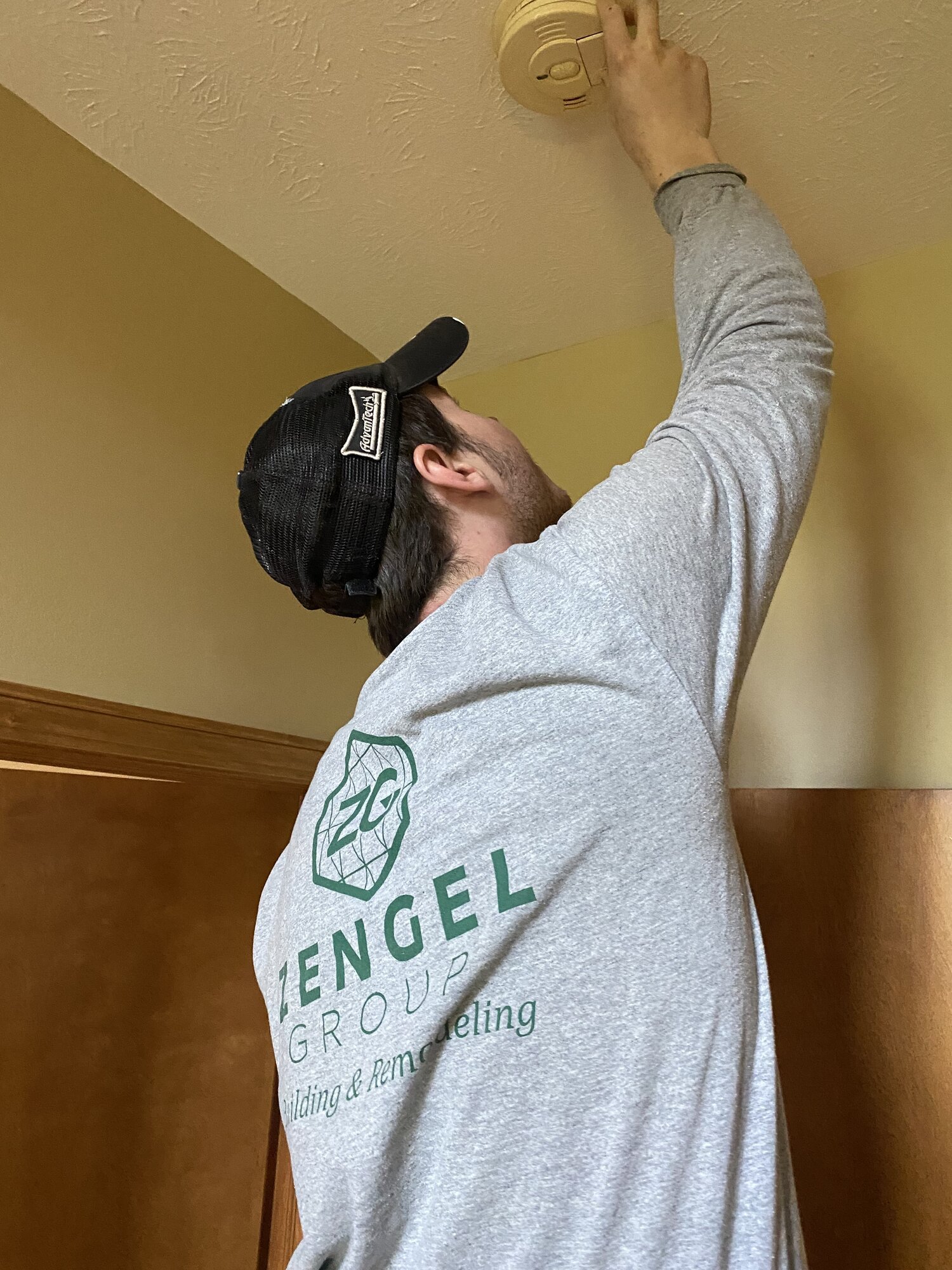Smoke Alarms
Spring is a great time to check the smoke alarms in your home to make sure they are operating correctly.
If your alarms have removable batteries it is best to replace the batteries. For alarms with sealed-in batteries, use the test function to ensure they are operating. While you are checking batteries, dust and clean the units following the manufacturer’s instructions. Smoke alarms need to be replaced every 10 years, and if your alarm has a built-in carbon monoxide (CO) detector it will need to be replaced every 5-7 years.

If your existing smoke alarms don’t detect CO, you should consider updating them. You can also interconnect all of your smoke alarms, so if one alarm goes off all the others do as well.
The current building code requires a smoke alarm in each bedroom, outside each bedroom, and on every level of the home at a minimum (usually in or near each living area). It also requires that all of the alarms are interconnected. This means if we are doing remodeling work on your home we might have to update your smoke alarm system.
When considering the placement of smoke alarms, here are some things to remember from the National Fire Protection Association.
- Smoke alarms installed in the basement should be installed on the ceiling at the bottom of the stairs leading to the next level
- Smoke alarms should be installed at least 10 feet from a cooking appliance to minimize false alarms when cooking
- Mount smoke alarms high on walls (not more than 12’’ from ceiling) or ceilings
- On pitched ceilings, install the alarm within 3 feet of the peak but not within the apex of the peak (four inches down from the peak)
- Don’t install alarms near windows, doors, or ducts where drafts may interfere with their operation